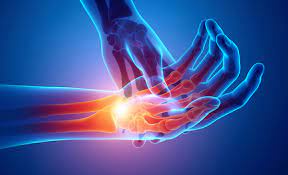Introduction:
Persistent back pain affects millions of people globally, significantly impairing their overall health, ability to work, and quality of life. Acute back pain usually disappears within a few weeks following an accident or injury, but chronic back pain can persist for three months or more and often has no known cause. Sustained back pain requires a multimodal approach that addresses both the physical and psychological aspects of the problem. This article looks at holistic approaches to reduce the affects of chronic back pain, such as medication, physical therapy, dietary changes, and psychological support.
Understanding Chronic Back Pain
Chronic back pain can be brought on by a variety of disorders, including osteoarthritis, spinal stenosis, herniated discs, degenerative disc disease, and spondylolisthesis. Treatment could be more challenging in situations when the exact cause of pain is still unclear. Back pain is complex and necessitates a personalized approach to treatment that considers the individual circumstances, degree of pain, way of life, and overall health of each patient.
Medical Interventions
Substances:
Over-the-counter (OTC) pain relievers such as acetaminophen or ibuprofen may be useful for treating minor persistent back pain. For more severe cases of pain, doctors may prescribe muscle relaxants, nonsteroidal anti-inflammatory drugs (NSAIDs), or even opioids in order to provide short-term relief. However, due to the potential for dependence and negative side effects, opioids are provided cautiously and under strict medical supervision.
injections In certain individuals, corticosteroid injections can reduce surrounding nerve root inflammation and provide temporary pain relief. However, their benefits wear off with time and they are not a permanent solution.
Surgery:
Patients who have not improved with conservative therapy are typically candidates for surgery if there is a known underlying cause (such as a herniated disc pressing on a nerve) that can be treated surgically.
Exercise and Physical Therapy
A structured physical therapy program is necessary for the treatment of chronic back pain. Customized exercise regimens that increase range of motion, encourage flexibility, and fortify the back muscles can be designed by physical therapists. In particular, core-strengthening exercises are essential for pain management and spine stability.
Changes in Lifestyle
Ergonomics: By adopting ergonomic practices at work and at home and by improving your posture, you can lessen back strain. A few small adjustments can go a long way, such as choosing chairs with sufficient lumbar support, reducing computer screens, and avoiding prolonged sitting.
Controlling weight:
Excessive weight bearing puts stress on the back muscles and spine. Maintaining a healthy diet and engaging in regular exercise can help to reduce the severity of back pain.
Quit Smoking:
Smoking reduces blood flow to the lower spine and inhibits the healing process following back injuries, both of which can result in spinal disc degeneration.
Psychological Support In addition to its physical effects, chronic back pain has significant psychological repercussions, including an increased risk of stress, anxiety, and depression. Cognitive-behavioral therapy (CBT) can help patients manage the emotional challenges associated with having chronic pain by changing negative thought patterns and fostering more positive coping mechanisms.
Alternative and Supplemental Medical Practices
Acupuncture:
This traditional Chinese medicine technique involves inserting small needles into certain body parts. Acupuncture has been shown to have potential in treating chronic back pain.
Massage therapy: Regular massages can improve circulation, relax stiff muscles, and temporarily reduce discomfort.
Tai Chi and yoga are physical training regimens that combine breathing exercises, meditation, and physical postures to increase body strength, decrease stress, and promote flexibility. When it comes to treating chronic back pain, they might be really beneficial.
Mindfulness & Meditation:
Practicing mindfulness through meditation may help people manage pain more skillfully by promoting a greater awareness of bodily sensations and lowering stress levels.
Conclusion:
controlling persistent back pain requires an all-encompassing approach that considers the behavioral, emotional, and physical factors that contribute to the condition. When combined with medicinal therapies, physical therapy, lifestyle improvements, and psychological support, people can significantly lessen the burden of persistent back pain. Close collaboration between patients and their healthcare providers is necessary to develop a personalized pain management plan that suits each patient's needs and preferences. By using the right strategies, it is possible to improve quality of life and regain control over chronic back pain.


No comments yet